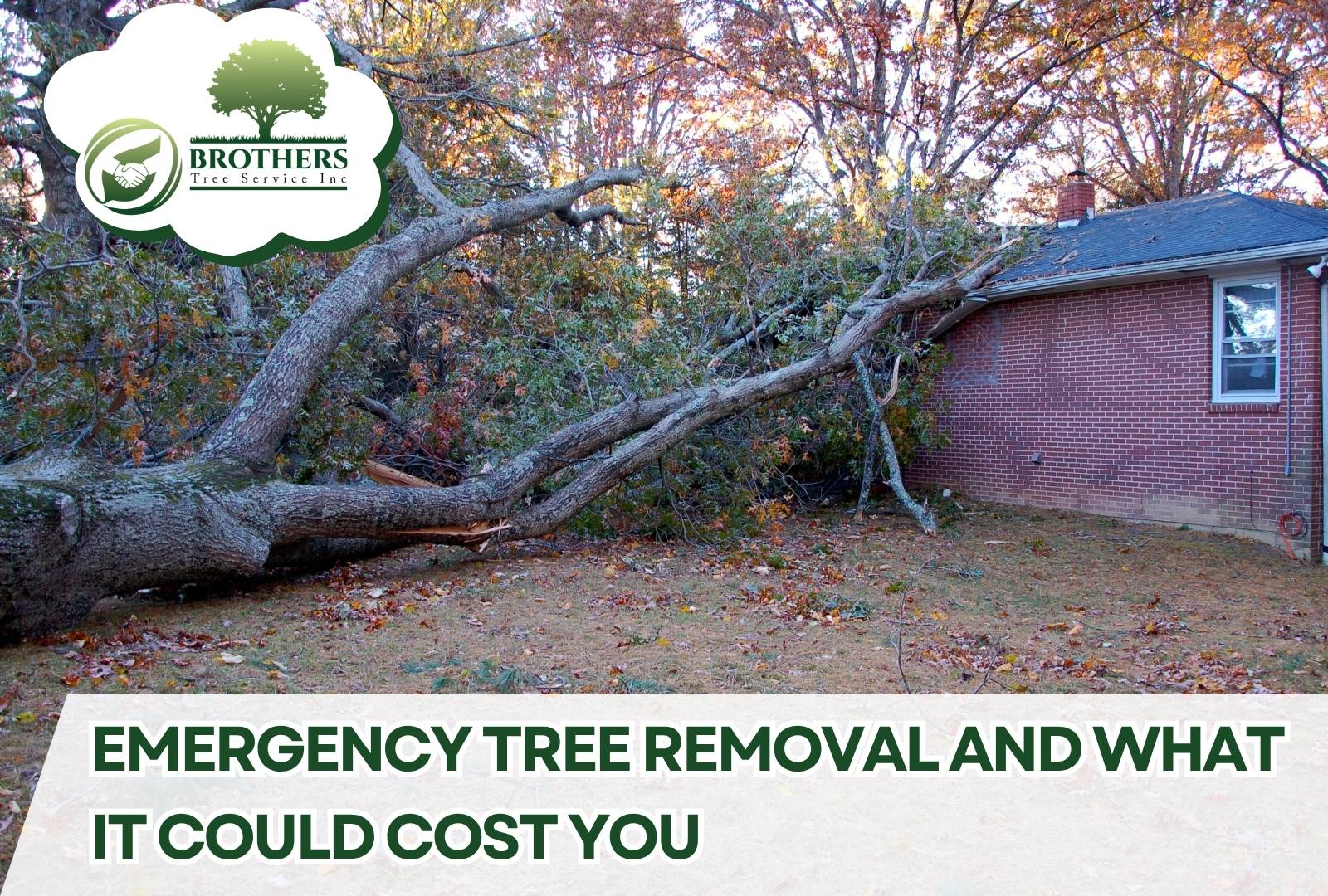
A fallen tree can cause major damage in an instant. Whether it’s blocking your driveway, resting on power lines, or damaging your roof, knowing how to handle emergency tree removal is key. It’s not just about safety—it’s also about acting fast and understanding the potential costs involved.
At Brother’s Tree Service INC, we help homeowners make quick, informed decisions during these stressful moments. This guide walks you through what to do when a tree falls and how fallen tree removal cost is determined.
What to Do Right After a Tree Falls
Step 1: Stay Safe and Keep Others Away
First, make sure no one is injured and avoid approaching the tree, especially if it’s touching electrical lines or structures. If power lines are involved, call emergency services immediately.
For more advice on safety, visit our tree safety guide for essential tips.
Step 2: Assess Visible Damage
Check for:
- Structural damage to your home or roof
- Blocked driveways or roads
- Uprooted roots or hanging limbs
Take photos for insurance and avoid trying to cut or move the tree yourself. Large or unstable trees are dangerous without the right tools and experience.
Step 3: Call a Tree Removal Service
The faster you contact professionals, the safer and smoother the removal process will be. Our emergency tree removal team responds quickly and handles everything from assessment to full cleanup.
What Impacts Fallen Tree Removal Cost?
Several factors affect the cost of removing a fallen tree. Here’s what to consider:
- Size and type of the tree
Larger trees take more time, labor, and equipment to remove. - Location and accessibility
If the tree is leaning on a structure, caught in other trees, or in a tight spot, expect the cost to go up. - Emergency service timing
Nights, weekends, and storms can lead to higher emergency tree removal fees.
Our article on tree removal safety and best practices covers what makes a removal job safe and cost-efficient.
Why Emergency Tree Removal Costs Can Vary
Not all tree removals are the same, especially during emergencies. A few key conditions can make the job more challenging, which naturally affects the final cost. Contact us now.
Tree Position and Risk Level
If the fallen tree is resting on a home, vehicle, or is tangled in power lines, the removal becomes more technical. These situations often require special tools, more manpower, and extra caution, all of which can raise the cost.
Equipment and Labor Required
Some removals are straightforward, but others may require cranes, bucket trucks, or rope rigging systems. The more tools and trained crew members needed, the more complex the job becomes.
Urgency of the Situation
Emergency calls placed after hours or during storms usually require immediate response. That kind of availability can increase service rates due to limited scheduling and higher risk conditions.
Want to be proactive? Check out our article on tree removal safety tips and best practices to see what you can do before disaster strikes.
FAQs – Emergency Tree Removal
How fast should I act after a tree falls?
Immediately. Safety risks increase by the hour. Call emergency professionals as soon as possible.
Will insurance cover tree removal?
It depends on your policy. Many plans cover removal if the tree causes property damage. Take photos and document everything.
Can I remove a fallen tree myself?
Only if it’s small, fully on the ground, and not near structures or power lines. Larger trees should always be handled by trained crews.
Need Fast, Safe Tree Removal?
Dealing with a fallen tree is stressful, but you’re not alone. Brother’s Tree Service INC offers safe, quick emergency tree removal to restore peace of mind. We’ll assess the scene, remove the tree, and help you avoid extra costs and risks.
Get help now or review our emergency removal services to prepare ahead of time.
